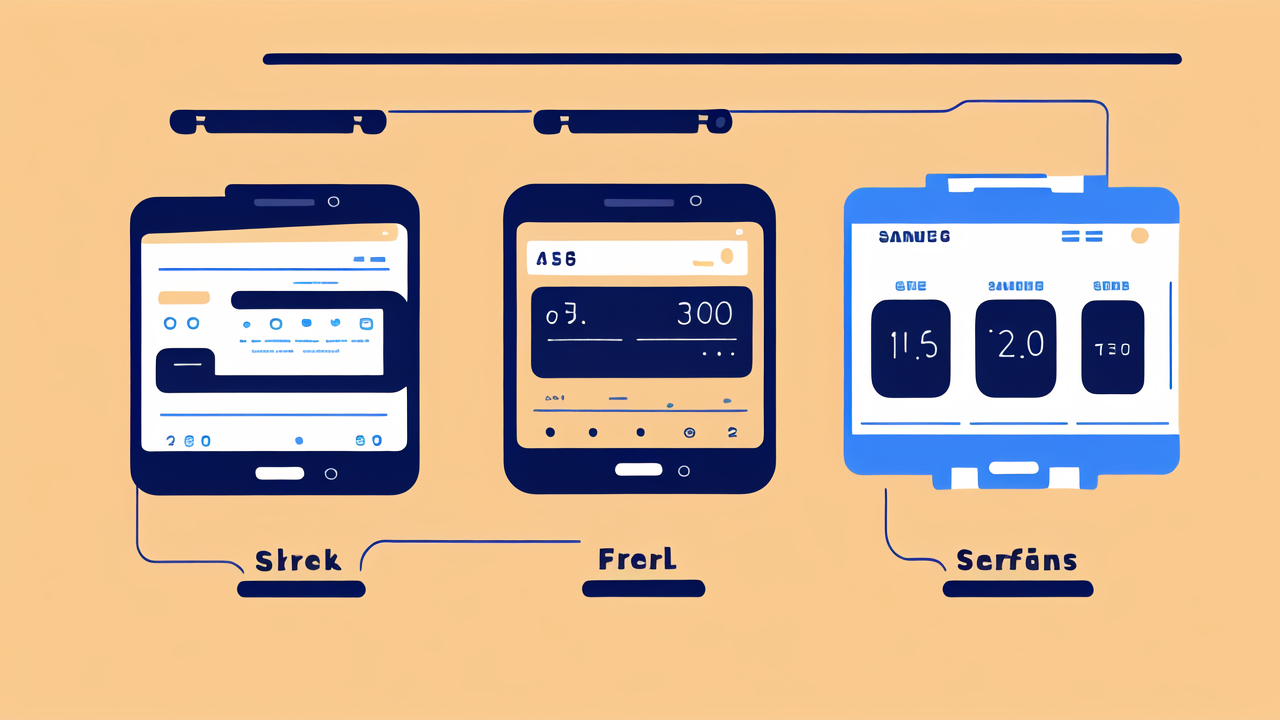The Rise of Smart Watches in the Wearable Technology Market
Examining the Growth Trends of Smart Watches
Smart watches have seen a meteoric rise in popularity over the past decade. Initially, they were simple fitness trackers. Now, they've become full-fledged wearable computers. The growth has been steady and impressive. In 2015, global smart watch sales were around 5 million units. By 2020, this number had skyrocketed to over 70 million units. This trend shows no signs of slowing down. Experts predict the market will continue to grow at a rate of 15-20% annually.

Several factors have driven this growth:
- Increasing health consciousness
- Technological advancements
- Integration with smartphones
- Improved battery life
- More stylish designs
As smart watches become more capable, their appeal widens. They're no longer just for tech enthusiasts or fitness buffs. They're becoming everyday accessories for people of all ages and lifestyles.
The Key Players and Innovators in the Market
The smart watch market is dominated by a few key players. Apple leads the pack with its Apple Watch series. Samsung follows closely with its Galaxy Watch line. Other significant players include:
- Fitbit (now owned by Google)
- Garmin
- Fossil
- Huawei
Each of these companies brings unique innovations to the table. Apple focuses on seamless integration with iPhones and health features. Samsung emphasizes long battery life and versatility. Fitbit leverages its fitness tracking expertise. Garmin targets outdoor enthusiasts with rugged designs and GPS capabilities.
Smaller companies are also making waves with niche offerings. For example, Withings focuses on hybrid watches that look traditional but have smart features. Amazfit offers budget-friendly options with impressive specs.
Impact of Technological Advancements on Smart Watch Design
Technological advancements have dramatically changed smart watch design. Early models were bulky and had limited functionality. Today's smart watches are sleek, powerful, and feature-packed. Key advancements include:
- Display technology: OLED and AMOLED screens offer vibrant colors and energy efficiency.
- Processor improvements: Faster, more efficient chips enable smoother performance.
- Sensor technology: Advanced sensors track everything from heart rate to blood oxygen levels.
- Battery technology: Improved batteries and power management extend usage time.
- Connectivity: 4G/5G and Wi-Fi allow standalone operation without a phone.
These advancements have allowed smart watches to become more than just phone accessories. They're now standalone devices capable of complex tasks. The design has also evolved to be more fashionable and customizable. Users can now choose from a wide range of styles to suit their taste.
Features and Capabilities of Modern Smart Watches
Health and Fitness: The Core of Smart Watch Functionality
Health and fitness tracking remains at the heart of smart watch functionality. Modern devices offer a wide range of features in this area. These include:

- Heart rate monitoring: Continuous tracking throughout the day and during workouts.
- ECG (electrocardiogram): Detecting irregular heart rhythms.
- Blood oxygen monitoring: Measuring oxygen saturation levels.
- Sleep tracking: Analyzing sleep patterns and quality.
- Workout detection: Automatically recognizing and tracking various exercises.
- GPS tracking: Mapping routes for runs, hikes, and bike rides.
- Stress monitoring: Measuring stress levels through heart rate variability.
Many smart watches now also offer guided workouts and personalized fitness plans. They can track progress over time and provide insights to improve overall health. Some even integrate with popular fitness apps for a more comprehensive experience.
The focus on health has expanded beyond just fitness. Many smart watches now include features for overall wellness. These might include mindfulness reminders, breathing exercises, or even noise level monitoring.
Lifestyle and Convenience: The Expanding Horizons of Smart Watches
While health tracking is crucial, smart watches have evolved to offer much more. They've become powerful tools for enhancing daily life and convenience. Some key features include:
- Notifications: Alerts for calls, messages, emails, and app updates.
- Mobile payments: Contactless payments using NFC technology.
- Music control: Playing and controlling music directly from the watch.
- Voice assistants: Siri, Google Assistant, or Bixby for voice commands.
- Navigation: Turn-by-turn directions on your wrist.
- Weather updates: Real-time weather information and forecasts.
- Calendar management: Viewing and managing appointments.
Smart watches are also becoming more independent from smartphones. Many now offer cellular connectivity. This allows users to make calls, send messages, or stream music without carrying their phone.
Some watches even offer unique features like fall detection or emergency SOS calls. These can be lifesaving for elderly users or those with health conditions. As technology advances, we can expect to see even more innovative lifestyle features in future smart watches.
Enterprise Applications: Smart Watches in the Workplace
Smart watches are finding their way into the workplace. They offer unique benefits for businesses and employees alike. Some enterprise applications include:
- Communication: Quick access to messages and notifications without disrupting meetings.
- Time management: Calendar alerts and reminders to keep schedules on track.
- Security: Two-factor authentication for accessing secure systems.
- Health monitoring: Encouraging employee wellness through activity tracking.
- Hands-free operation: Voice commands for tasks in environments where hands are occupied.
In specific industries, smart watches have more specialized uses. For example:
- Healthcare: Doctors can receive patient alerts and access records quickly.
- Logistics: Warehouse workers can track inventory and receive pick-up instructions.
- Hospitality: Staff can receive guest requests and coordinate services efficiently.
- Construction: Workers can access safety checklists and receive hazard alerts.
As smart watches become more powerful, their role in the workplace is likely to expand. They offer a unique combination of connectivity and discretion that can boost productivity.
The Future of Smart Watches in the United States
Predicting Market Trends for Smart Watches
The future of smart watches in the US looks bright. Analysts predict continued growth in the coming years. Key trends to watch include:

- Health focus: More advanced health monitoring features, possibly including blood pressure and glucose monitoring.
- AI integration: Smarter, more personalized experiences powered by artificial intelligence.
- Extended battery life: Innovations in battery technology to extend usage time.
- Improved displays: Higher resolution, always-on displays with better outdoor visibility.
- Expanded ecosystem: Greater integration with smart home devices and IoT.
We may also see more specialized smart watches for specific uses. For example, watches designed for medical monitoring or extreme sports. The line between smart watches and traditional watches may blur further. More hybrid options that combine smart features with classic designs could emerge.
As 5G networks become more widespread, smart watches could become even more independent from smartphones. They might function as standalone communication devices. This could lead to new form factors and use cases we haven't yet imagined.
Regulatory Challenges and Opportunities in the Wearable Tech Sector
The growing capabilities of smart watches bring both challenges and opportunities in terms of regulation. Key areas of focus include:
- Data privacy: Ensuring user health and location data is protected.
- Medical device classification: Determining when health features require FDA approval.
- Consumer protection: Ensuring accuracy of health measurements and fitness tracking.
- Electromagnetic radiation: Monitoring and regulating exposure levels.
- Accessibility: Ensuring smart watches are usable by people with disabilities.
These regulatory challenges also present opportunities. Clear guidelines can foster innovation while protecting consumers. They can also help build trust in smart watch technology. This is especially important as these devices collect more sensitive health data.
The US government has shown interest in leveraging wearable tech for public health. Smart watches could play a role in early disease detection or pandemic monitoring. This could lead to new partnerships between tech companies and health agencies.
The Role of Consumer Preferences in Shaping Smart Watch Development
Consumer preferences will play a crucial role in shaping the future of smart watches. Key factors include:
- Design: Balancing functionality with fashion appeal.
- Battery life: Demand for longer-lasting devices.
- Privacy: Growing concern over data collection and use.
- Customization: Desire for personalized experiences and looks.
- Ease of use: Preference for intuitive interfaces and simple setup.
As the market matures, we may see more segmentation. Different types of smart watches could cater to specific user groups. For example, fitness enthusiasts, business professionals, or fashion-conscious consumers.
Sustainability is also becoming a bigger concern for consumers. This could drive development of more eco-friendly smart watches. Features might include longer-lasting batteries, easily replaceable parts, or use of recycled materials.
Ultimately, the success of future smart watches will depend on how well they meet evolving consumer needs. Companies that can balance innovation with user-friendly design and privacy protection are likely to lead the market.




Leave a comment
This site is protected by hCaptcha and the hCaptcha Privacy Policy and Terms of Service apply.